Let’s discuss Enable AI Enhanced Search in History Policy in Microsoft Edge to control data Privacy using Intune. This policy controls whether users can use AI-enhanced search in their browsing history in Microsoft Edge. With this policy, users can search using synonyms, natural language phrases, and minor spelling errors to find previously visited pages.
This feature is works with an On-Device AI Model that runs entirely on the user’s device. The browser history which is already stored in users device is used by the on-device model. The model then uses its semantic understanding of the browsing history to find relevant results.
For example, if a user searches for “hybrid work guide,” the AI can match this to a page they visited with the title “The Definitive Guide to Remote-First Work.” This is the natural language phrases used by the user to get the result with this policy. Like this This policy provides many benefits.
This policy helps uses to enhance the search to find information they previously accessed. To access the information there is no need to find information they previously accessed. So user experience is improved with AI Enhanced Search in History.
Table of Contents
Enable AI Enhanced Search in History Policy in Microsoft Edge to Controls Data Privacy using Intune
This policy is applicable for different scenarios. For example, if you are working as an IT admin in marketing agency and Microsoft Edge browser is the default browser. The employees constantly researching market trends, competitor campaigns, and creative inspirations.
They frequently look up articles and websites they’ve visited in the past to reference them in new projects. With this policy employees can easily access such informations.
- Enable Address Bar Search Suggestion to Optimizing User Experience for Google Chrome Using Intune
- Configuring Default Search Provider Suggestion URL in Microsoft Edge with Intune Policy
- Enable Disable Search Bar Allowed in Edge Through Microsoft 365 Admin Center Policy
How to Configure this Policy
By configuring this policy, admins can fully control all devices in organisation. As an admin you can configure thus policy with the Microsoft Intune admin center, you can quick do the configuration steps. To start the Policy Creation, open the Microsoft Intune Admin center. Then go to Devices > Configuration > Create > New Policy.

Profile and Platform for Policy
Profile creation is the next step after clicking on the +New Policy. This step cannot be skipped. Here, I selected Windows 10 and later as the Platform and Settings catalog as the profile type. Then click on the Create button.
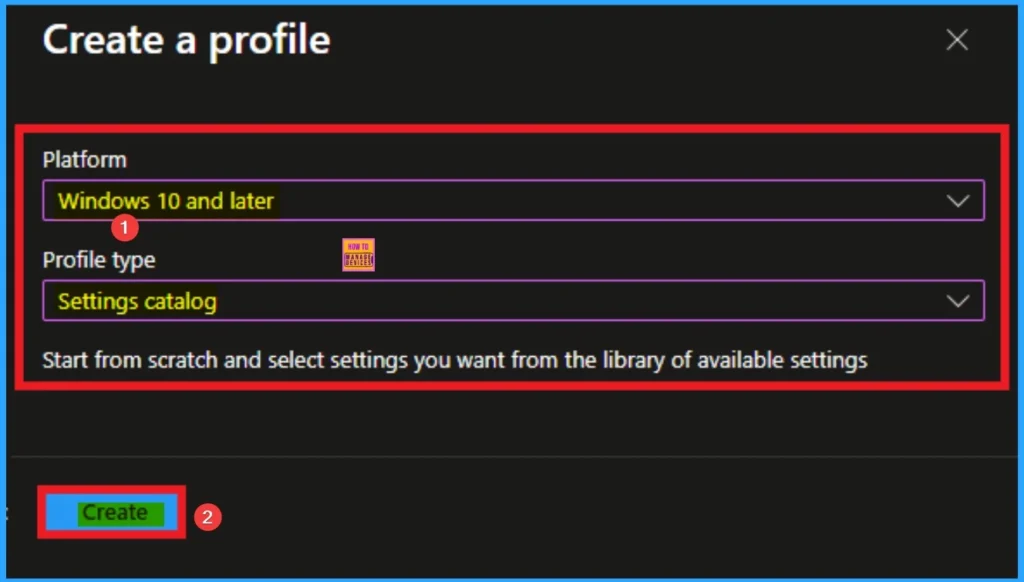
Basic Tab for Naming Policy
Before selecting specific settings, you have to name the policy and add an appropriate description. Here Name and Description can be added and Name is a mandatory field and Description is optional. After adding this click on the Next button.

Configure Translate Settings for Google Chrome
With Settings Picker, you can use the Configuration Settings Tab. On this tab, you can click on the +Add Settings hyperlink to get the Settings Picker. The settings picker shows huge number of settings. Here, I would like to select the settings by browsing by Category. I choose Microsoft Edge. From this sub-category, I choose Control access to AI-enhanced search in History settings.
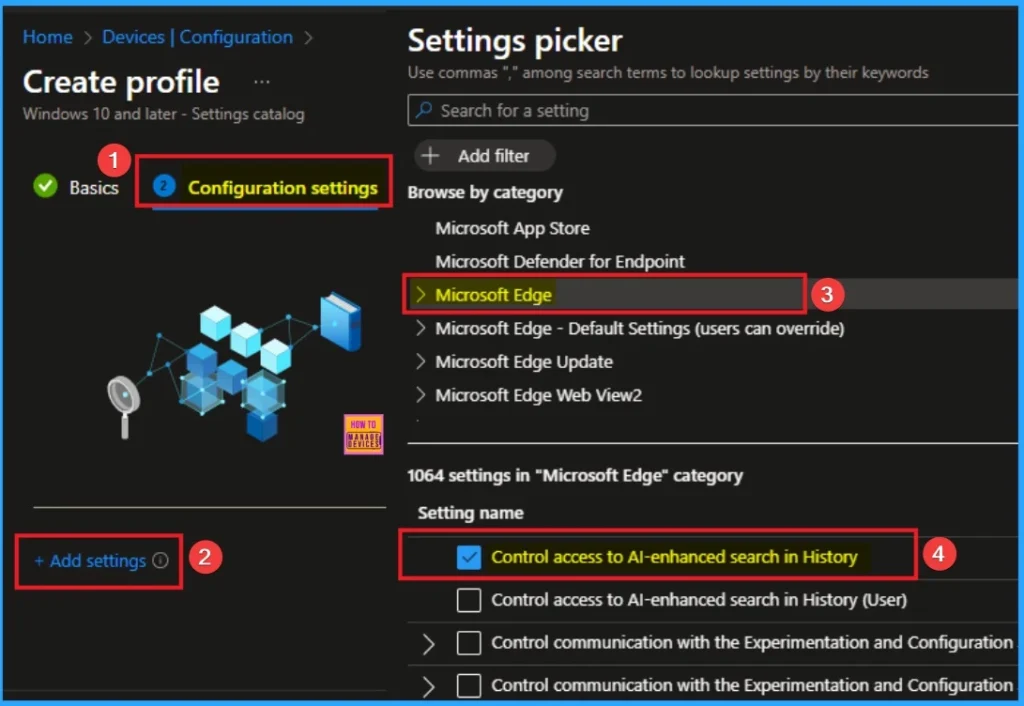
Disable AI-Enhanced Search in History
When disabled, users can only perform exact match (verbatim) searches in their history. Te default value of this policy disable, if you want to disable this policy, click on the Next button.
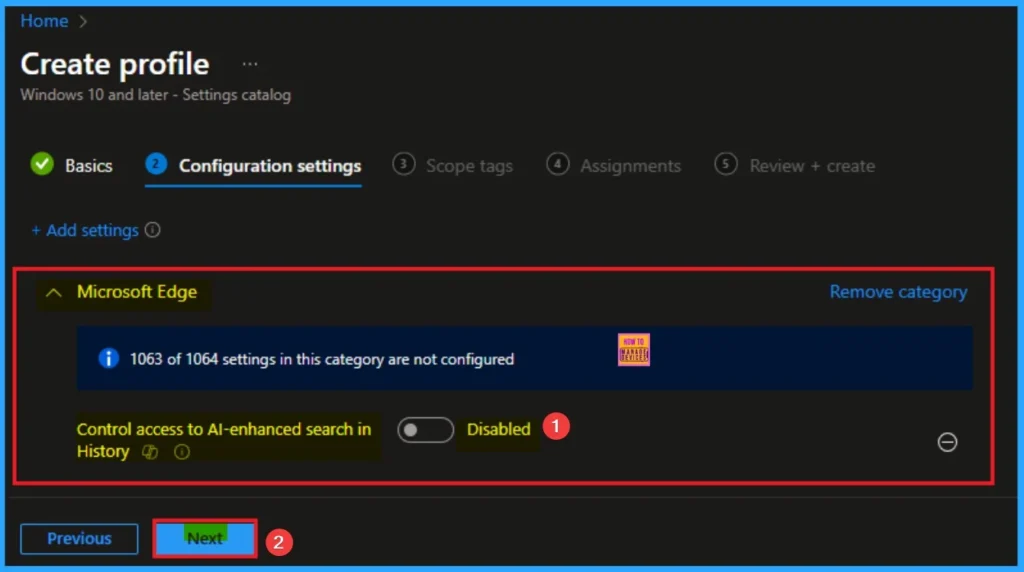
To enhance organizations, productivity, admins can easily enable this policy. Also users efficiency can be improved. Here i would like to enable this policy.
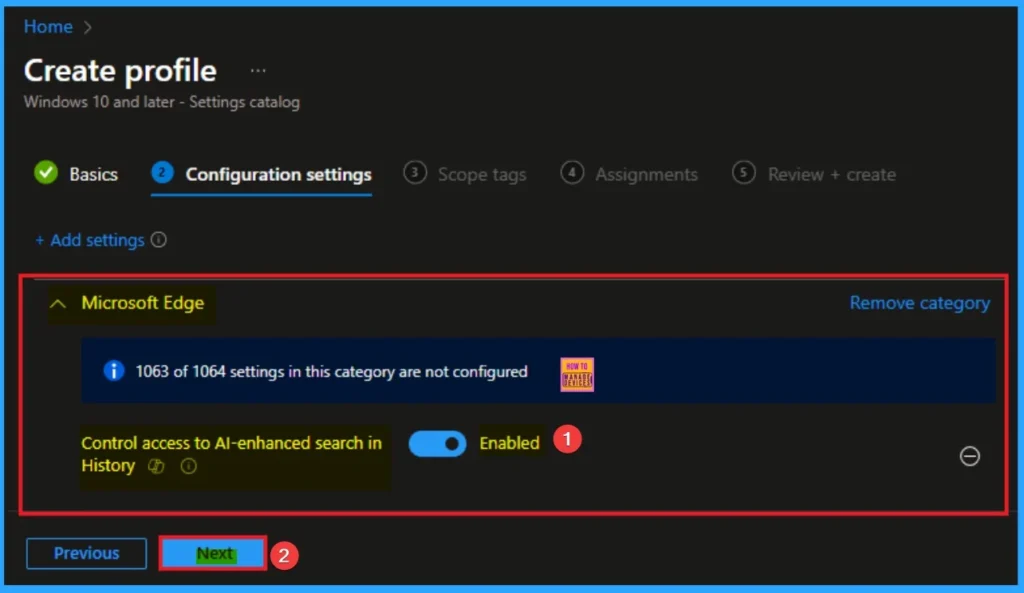
Scope Tags
With scope tags, you create a restriction on the visibility of the translation for Google Chrome. It helps to organise resources as well. Here, I would like to skip this section, because it is not mandatory. Click on the Next button.

Assignments Tab for Selecting Group
To assign the policy to specific groups, you can use the Assignment Tab. Here I click, +Add groups option under Included groups. I choose a group from the list of groups and click on the Select button. Again, I click on the Select button to continue.
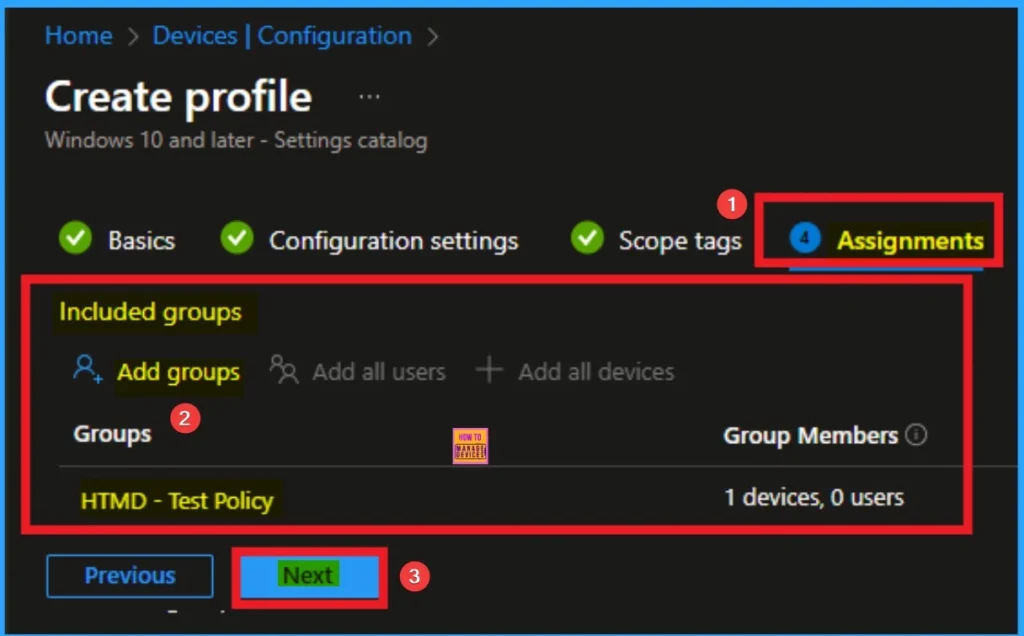
Review + Create Tab
Before completing the policy creation, you can review each tab to avoid misconfiguration or policy failure. After verifying all the details, click on the Create Button. After creating the policy, you will get a success message.
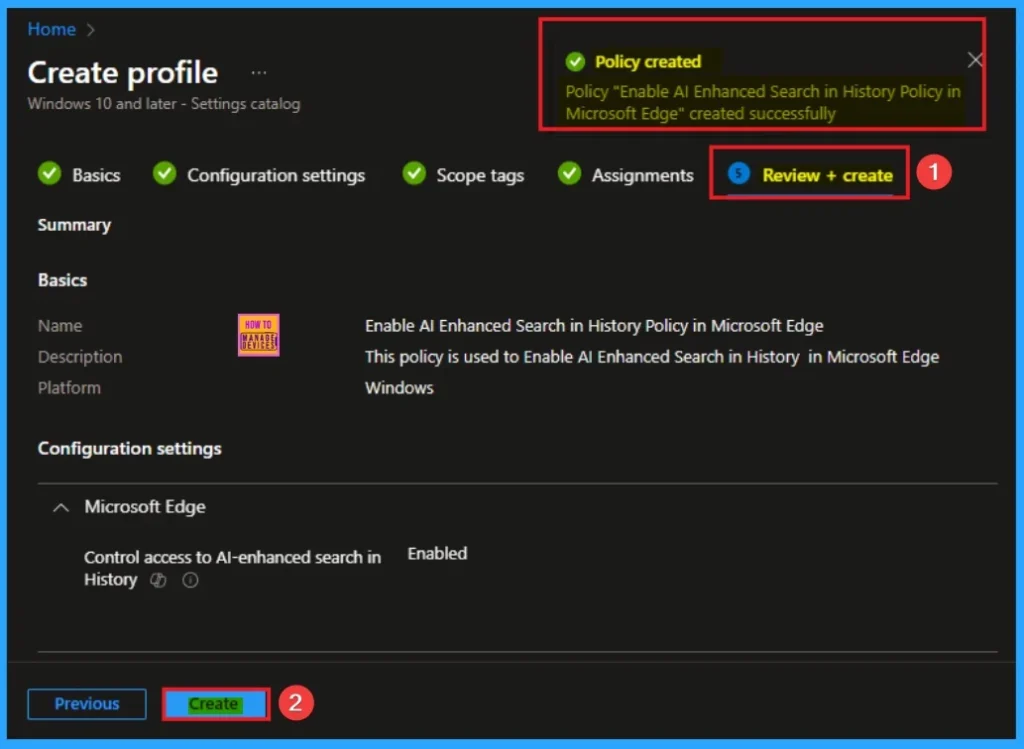
Device Check-in Status
The Monitoring Status page shows whether the policy is succeeded or not. o quickly configure the policy and take advantage of the policy sync the assigned device on Company Portal. Open the Intune Portal. Go to Devices > Configuration > Search for the Policy. Here, the policy shows as successful.

Event Viewer Details
Event Viewer helps you check the client side and verify the policy status. Open the Client device and open the Event Viewer. Go to Start > Event Viewer. Navigate to Logs: In the left pane, go to Application and Services Logs > Microsoft > Windows > DeviceManagement-Enterprise-Diagnostics-Provider > Admin.
- Filter for Event ID 814: This will help you quickly find the relevant logs.
| Event ID Details |
|---|
| MDM PolicyManager: Set policy string, Policy: (EdgeHistoryAlSearchEnabled), Area: (microsoft_edgev138~Policy~microsoft_edge), EnrollmentID requesting merge: (EB427D85-802F-46D9-A3E2-D5B414587F63), Current User: (Device), String: (), Enrollment Type: (0x6), Scope: (0x0). |
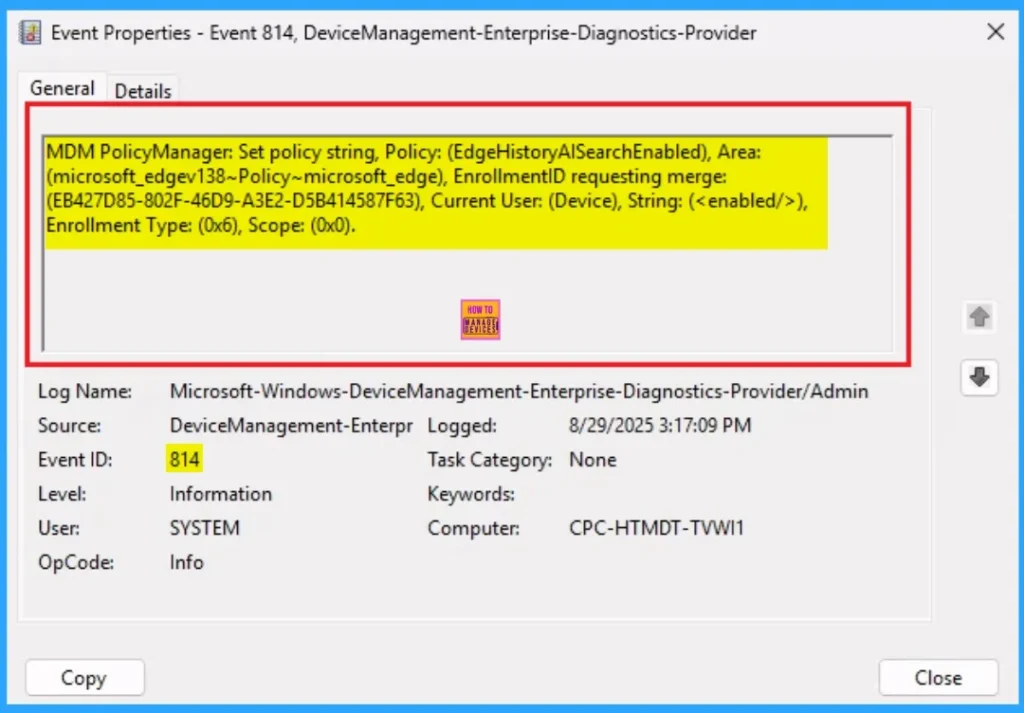
Removing the Assigned Group from this Settings
If you want to remove the Assigned group from the policy, it is possible from the Intune Portal. To do this, open the Policy on Intune Portal and edit the Assignments tab and the Remove Policy.
To get more detailed information, you can refer to our previous post – Learn How to Delete or Remove App Assignment from Intune using by Step-by-Step Guide.

How to Delete AI Enhanced Search in History Policy
You can easily delete the Policy from the Intune Portal. From the Configuration section, you can delete the policy. It will completely remove it from the client devices.
For detailed information, you can refer to our previous post – How to Delete Allow Clipboard History Policy in Intune Step by Step Guide.
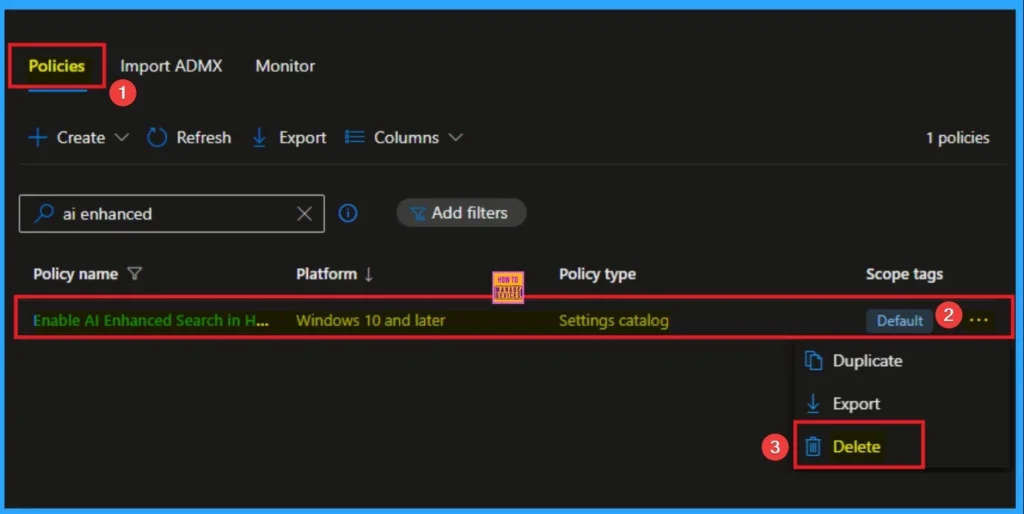
Need Further Assistance or Have Technical Questions?
Join the LinkedIn Page and Telegram group to get the step-by-step guides and news updates. Join our Meetup Page to participate in User group meetings. Also, Join the WhatsApp Community to get the latest news on Microsoft Technologies. We are there on Reddit as well.
Author
Anoop C Nair has been Microsoft MVP for 10 consecutive years from 2015 onwards. He is a Workplace Solution Architect with more than 22+ years of experience in Workplace technologies. He is a Blogger, Speaker, and Local User Group Community leader. His primary focus is on Device Management technologies like SCCM and Intune. He writes about technologies like Intune, SCCM, Windows, Cloud PC, Windows, Entra, Microsoft Security, Career, etc.
